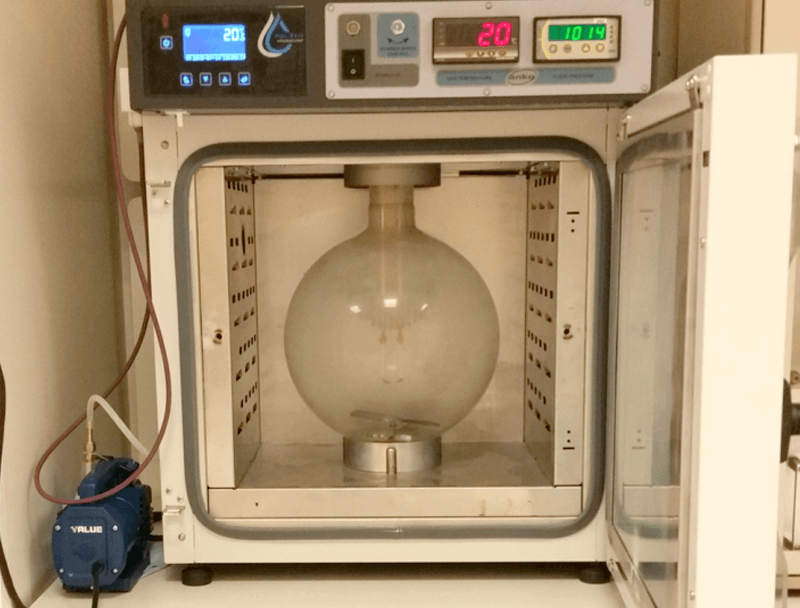Thermal Stability Testing
ASTM E681 / ASHRAE 34
This test is conducted to determine the lower and upper concentration limits of flammability of chemicals having sufficient vapour pressure to form flammable mixtures in air at atmospheric pressure at a specific test temperature. The test can be conducted on vaporised liquids and gaseous materials. Refrigerant gases are tested to ASHRAE 34, using the method detailed within ASTM E681, with specific ignition criteria and air moisture content.
LOWER FLAMMABLE LIMIT OR LOWER EXPLOSIVE LIMIT (LFL / LEL)
Lower limit of flammability or lower flammable limit (LFL)—the minimum concentration of a combustible substance that is capable of propagating a flame in a homogeneous mixture of the combustible and air, under the specified conditions of test. Generally 1% v/v of the material is added to a glass vessel under vacuum. Air allowed back into the system, the material and air mixed, before an electrical ignition source is activated and observations for flame propagation observed. The material is then incrementally increased in 1% steps until ignition is observed and the LFL defined.
UPPER FLAMMABLE LIMIT OR UPPER EXPLOSIVE LIMIT (UFL / UEL)
Upper limit of flammability or upper flammable limit (UFL)—the maximum concentration of a combustible substance that is capable of propagating a flame in a homogeneous mixture of the combustible and air, under the specified conditions of test. Once the UFL has been established, a theoretical UFL is calculated and testing for UFL is started at a concentration above. The material is added to a glass vessel under vacuum, air allowed back into the system, the material and air mixed, before an electrical ignition source is activated and observations for flame propagation observed. The material is then incrementally decreased in 1% steps until ignition is observed and the UFL defined.

To ensure that avoiding a flammable atmosphere as a ‘basis of safety’ is accurately conducted and monitored, making sure flammable limit alarms and detection systems are correctly set. Blended materials cannot simply be based upon worst case constituent values, therefore testing of the product is essential.

Auto-Ignition Temperature
Read More
Limited Oxygen Concentration (LOC)
Read More
Explosion Severity
Read More© 2024 Sigma-HSE (India) Pvt Ltd | Registered in India No. U93000DL2014PTC266010 | Designed By WebClixs